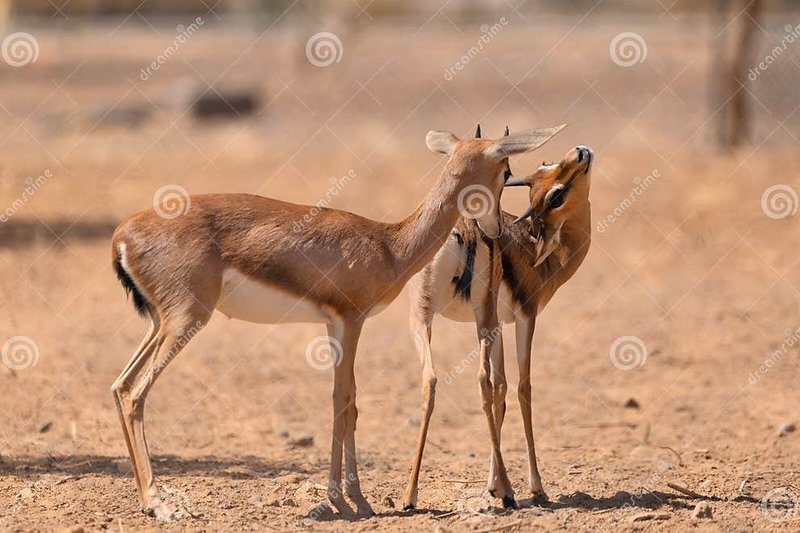
Raising young in the wild is no small feat. Just like any parent, gazelles must balance protection, nourishment, and teaching survival skills. Imagine a mother keeping watch over her fawn, ready to leap at a moment’s notice to protect it from lurking predators. Let’s dive into the world of gazelles and explore how these beautiful animals navigate the challenges of parenthood in the wild.
The Gestation Period: A Critical Start
The journey of a gazelle’s young begins with a critical phase: gestation. For most gazelle species, the gestation period lasts about six months. During this time, the mother gazelle prepares herself for the arrival of her fawn. Here’s the thing: nutrition is vital during this period. Mothers need to eat a balanced diet rich in grasses and leaves to ensure that their baby gets the necessary nutrients while still in the womb.
When the time comes, the mother finds a secluded spot away from the herd to give birth. This is a smart strategy. It reduces the chances of attracting predators and allows her to bond with her newborn in peace. Newborn gazelles are typically able to stand up and walk within a few hours, which is crucial for their survival.
Choosing a Safe Spot
The location where a gazelle gives birth can make all the difference. Ideally, it should be in tall grass or dense bushes that provide cover. This setup helps shield the fawn from the keen eyes of predators, like lions or hyenas. It’s not just about finding a good spot; it’s about ensuring safety for the little one.
Nursing: Providing Essential Nutrients
Once the fawn arrives, nursing becomes the top priority. Gazelle mothers produce rich milk that is high in fat, which is essential for the rapid growth of their young. Just like any parent, the mother is attentive and focused on her fawn’s needs. Nursing typically happens several times a day, and during this time, the mother also keeps a keen eye on her surroundings.
Honestly, you might be surprised to know that gazelle fawns can nurse for several months. As they grow, mothers gradually introduce them to solid food. This transition helps the fawn develop the digestive system needed for life outside the womb.
Vigilance is Key
During the nursing period, the mother remains highly vigilant. She often stands in a way that allows her to look out for danger while still keeping her fawn close. This instinctual behavior is a great survival tactic. If a predator approaches, she can quickly lead her fawn to safety.
Teaching Survival Skills: A Gradual Process
As the fawn grows, teaching survival skills becomes increasingly important. Gazelle mothers are known for their patience and persistence in this area. They’ll lead their young through the savannah, showing them where to find food and how to escape from potential threats. It’s almost like taking a class in how to be a gazelle!
One of the first lessons is how to be aware of their surroundings. Fawns learn to recognize sounds, smells, and sights that might indicate danger. The mother demonstrates staying still and silent when she senses a threat. It’s an essential skill, as even a moment of noise can attract predators.
Playtime: A Learning Experience
Interestingly, playtime is a big part of this education. Fawns engage in playful activities that mimic real-life scenarios, such as jumping or running away. This play helps them build strength and agility. In many ways, it’s a way of practicing for the real deal.
Forming Social Bonds: The Role of the Herd
As fawns grow older, their interactions with the herd become crucial. Gazelles are social animals and thrive within a group. By spending time with other young gazelles, they learn important social behaviors, like grooming and communication.
Herd dynamics can even impact how young gazelles learn to avoid danger. Here’s the thing: when older gazelles act as role models, younger ones mimic their behaviors. This natural mentoring helps them become more adept at surviving in the wild.
Safety in Numbers
Being part of a herd provides additional safety. Gazelles often work together to look out for danger. They communicate through various sounds and body language, alerting one another to potential threats. This cooperative behavior is a crucial aspect of their survival.
Facing Challenges: Predator Awareness
The harsh reality of the wild means that gazelles face constant threats from predators. Their ability to protect their young against these dangers is essential. Mother gazelles are quite skilled in identifying signs of danger. They can spot a lurking predator from a distance and know when it’s time to move their fawn to safety.
You might be wondering how they manage such a delicate balance between feeding their young and keeping them safe. Well, it’s all about instinct and experience. Mother gazelles trust their instincts, and with each passing day, they learn how to scout the environment for threats.
Using the Environment as Protection
When danger appears, a mother may lead her fawn toward thicker brush or tall grass. This provides a natural barrier against predators, allowing the fawn to remain hidden while still close to its mother. It’s all about using what nature has to offer for protection.
The Weaning Process: A Transition to Independence
Eventually, the time comes for the fawn to be weaned. This is a gradual process that often mirrors the transition from nursing to solid food. While the mother continues to nurse her fawn, she starts to encourage it to eat grass and other vegetation. It’s a pivotal moment that fosters independence.
You might find it fascinating that weaning can take several months. During this time, the mother gazelle slowly decreases the frequency of nursing. This helps the fawn adjust to its new diet while maintaining a strong bond with its mother.
Independence is Key
As the fawn matures, it gains more independence. By the time it is around six months old, it will typically be fully weaned. At this point, the young gazelle is ready to join the herd as a fully capable member, equipped with the survival skills learned from its mother.
Raising young in the wild is a beautiful yet challenging journey. Gazelles navigate the complexities of parenthood with grace and instinct, ensuring that their young grow strong and learn the skills necessary for survival. From the careful choice of birthing locations to the gradual process of weaning, every step plays a role in the circle of life.
As we reflect on how gazelles raise their young, we can appreciate not just their elegance but also the incredible bond between mother and fawn. It’s a reminder that in nature, nurturing and protecting the next generation is paramount. Gazelles are more than just stunning animals; they are dedicated caregivers, and their stories inspire us to value our connections with others.

